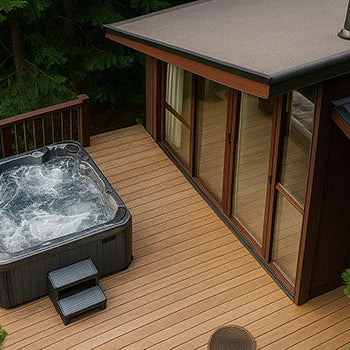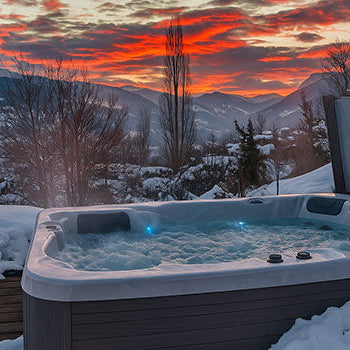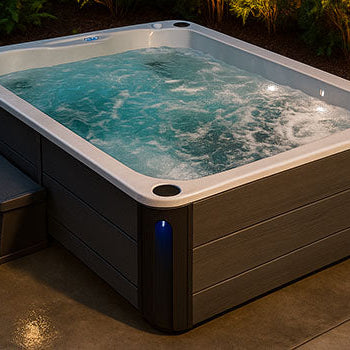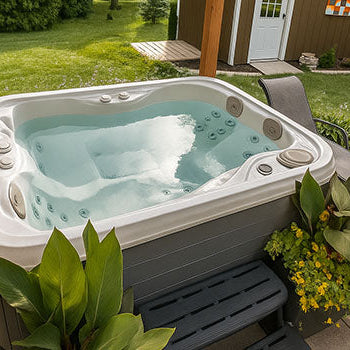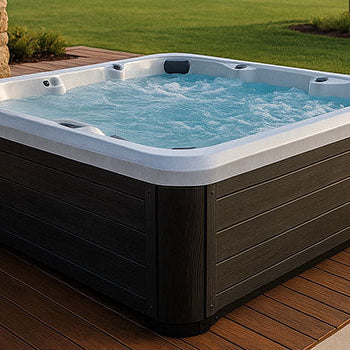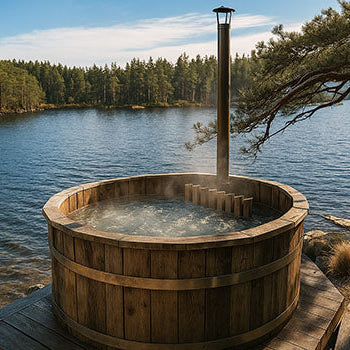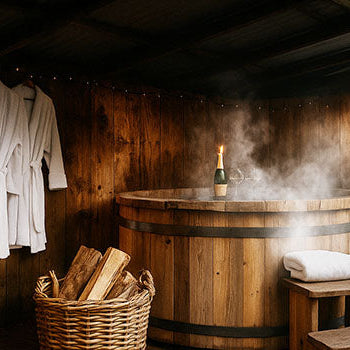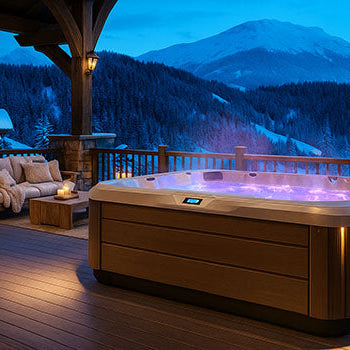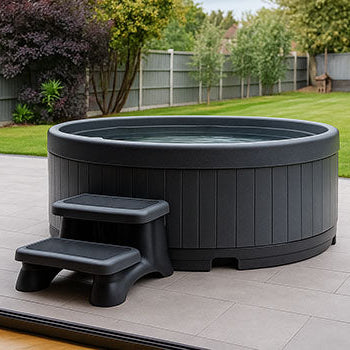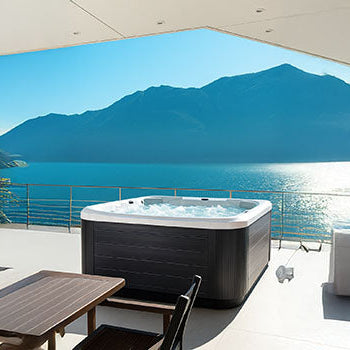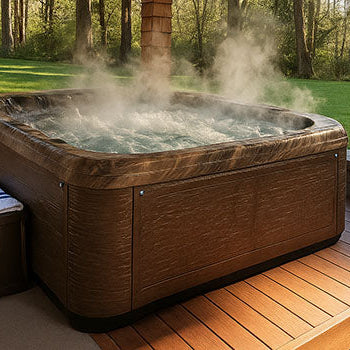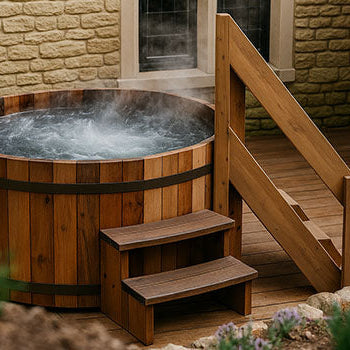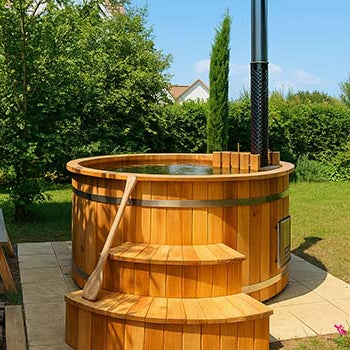Thinking of turning off your hot tub when it's not bubbling away? Short answer: usually, no, it’ll cost you more in the long run to reheat it. But that doesn’t mean you have to keep it roasting at full blast all the time. It all depends on how often you use it, what type of tub you have, and how well it’s insulated.
Maybe you’ve got a sleek Acrylic Hot Tub, a simple plug-and-play Rotomoulded model, or a charming Wooden Hot Tub out in the garden. Each behaves a bit differently. Let’s help you make the smartest, cheapest, and safest call for your setup.

Clarifying "Turning Off": Powering Down vs. Lowering Temperature
Switching Off Power Completely: Implications
Turning the hot tub off at the mains might feel like a quick win on your energy bill. But hold on. Cutting power stops circulation and filtration, which means the water just sits there, still and stale. In warm months, that can lead to bacterial buildup. In winter? The water might freeze inside the pipes, causing expensive damage.
It’s not just about switching it off, it’s about what happens after.
Using Standby/Economy/Sleep Modes or Lowering Temperature
Instead of cutting power, check your tub’s settings. Most newer tubs, including many Acrylic and Rotomoulded models, have built-in eco or sleep modes. These drop the water temperature and dial down energy use, but they keep filtration going.
If your tub doesn’t have these features, just manually lower the temperature. You’ll save money without compromising water quality or risking internal damage.
The Energy Argument: Maintaining vs. Reheating Revisited
Why Reheating from Cold Uses Significant Power
Letting your water cool down might seem like a money-saver, until you try to heat it back up. Raising 500+ litres from chilly to toasty takes serious wattage. It often costs more to reheat than to maintain a steady warm temperature, especially in winter.
It’s like turning your home’s heating off every night, you’ll spend more each morning just catching up.
How Well-Insulated Tubs Efficiently Maintain Heat
This is where insulation makes a real difference. Well-built hot tubs retain heat surprisingly well, especially if you’ve got a quality cover. Acrylic Hot Tubs usually come with strong insulation, which helps them maintain warmth with minimal energy.
Even Wooden Hot Tubs, when paired with a good insulated lid, can hold onto heat better than you’d expect.
General Consensus for Regular UK Use: Leave Power On
If you’re hopping in a few times a week (or even just every weekend), most UK owners find it cheaper and more convenient to leave the power on. The energy required to keep it warm is less than the cost and time needed to constantly reheat.
Plus, you always have your spa ready to go. No waiting. No fuss.

Factors Determining the Most Efficient Approach for You
Insulation Quality of Your Hot Tub (Crucial)
Let’s be honest: not all tubs are made equal. If your hot tub isn’t well-insulated, it’ll leak heat fast, and that’s money slipping away.
Budget Rotomoulded Hot Tubs often skip full foam insulation. In this case, you might save more by turning the temperature down when it’s not in use.
Frequency of Use (Daily/Weekly vs. Infrequent)
If your hot tub is your nightly unwind ritual, keep it running. But if you only use it once every two weeks, it makes sense to adjust the temperature or activate eco mode in between.
The less you use it, the less heat you need to keep pumping in.
Duration of Non-Use (Days vs. Weeks/Months)
Going away for a long weekend? Just reduce the temperature.
Going on a month-long adventure? That’s a different story. At that point, you’ll need to consider winterisation or full shutdown, but only with proper steps (we’ll get to that).
UK Climate and Ambient Temperature Effects
The colder your local area, the more your hot tub has to work to stay warm. In northern regions or during frosty nights, heat loss speeds up, especially in outdoor setups. If your spa isn’t well-insulated, expect a rise in running costs, or take steps to reduce the temperature when not soaking.
When Turning the Temperature Down (or Using Modes) Makes Sense
Short Absences (e.g., Weekend Away)
Off for a mini-break? Don’t shut it off. Just turn the temp down to around 26°C (80°F). It’ll save you money and still be easy to bring back to full heat when you return.
No algae. No smelly water. No drama.
Periods of Less Frequent Use
If your spa sessions are spaced out, try lowering the temperature to 21–24°C (70–75°F) between uses. Your heater won’t have to work as hard, but your tub will stay clean and in good working condition.
Utilising Built-In Energy-Saving Modes
Energy-saving modes are your best friend here. Most tubs have economy, sleep, or vacation modes built in. These are designed for exactly this purpose, to cut costs without compromising the safety or hygiene of your tub.
Check your model’s manual. It might surprise you what’s available with the push of a button.
When Completely Turning Off the Power Might Be Considered
Long Vacations (Weeks or Months) – Requires Winterisation in Cold Weather
If you're heading off for a few weeks or more, it's okay to shut things down, but you need to do it right. Drain the water. Clean the shell. Blow out the pipes if it’s winter.
Skipping these steps could leave your tub full of frozen water or musty surprises when you return.
Storing the Hot Tub Seasonally
Some people only use their hot tub in summer, and that’s fine! Just be sure to fully drain, dry, and clean it before switching off for the season. If you’re putting a Wooden Hot Tub into hibernation, dry it thoroughly to avoid warping or rot.
Safety Concerns During Electrical Storms (Temporary)
During a big storm, some people prefer to unplug for peace of mind. If that’s you, go ahead, but don’t leave it off too long. Get power back on as soon as it's safe, so filtration and circulation can resume.
Risks of Turning Power Off Incorrectly
Freezing Risk in Winter if Not Drained (Major Damage)
Water expands when it freezes. If your pipes are full and the temperature drops, they could burst. That’s not just a leak, it’s catastrophic damage that can cost hundreds (or more) to fix.
Never power off in winter unless your tub is fully winterised.
Water Stagnation and Quality Issues if Left Filled Without Power
Without power, there’s no filtration. No circulation. No sanitisation.
Still water turns nasty quickly. It can grow bacteria, turn cloudy, smell bad, or even stain your hot tub shell. If you’re not using it, keep it running, or drain it properly.

Conclusion: Keep Power On for Regular Use, Turn Temperature Down or Use Modes; Only Power Off for Long Absences (with proper draining/winterisation)
So, should you turn off your hot tub when it’s not in use?
For most people, no. It’s better (and cheaper) to leave it on, especially if you use it regularly. Use energy-saving modes. Lower the temp when you're away.
Only turn it off fully if you're not using it for several weeks, and even then, drain it properly.
Whether you're relaxing in an Acrylic, Rotomoulded, or Wooden Hot Tub, the goal is simple: save energy without causing damage. With a few smart steps, your tub stays clean, cosy, and ready whenever you need it.
